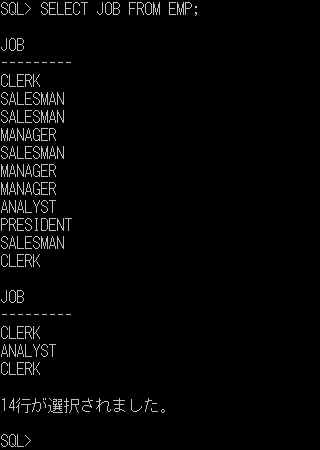
Notice the WHERE clause in the DELETE statement. The WHERE clause specifies which record(s) should be deleted. If you omit the WHERE clause, all records . You need to identify the primary key in TableA in order to delete the correct record.
The primary key may be a single column or a combination of several columns . How to Delete using INNER JOIN with SQL Server? How to delete all records returned by a subquery? SQL Deleting records with subqueries. Output: Sql select re-ordering columns.
The SQL DELETE Query is used to delete the existing records from a table. DELETE query to delete the selected rows, otherwise all the records would. This example would delete all records from the suppliers table where the. This SQL Server DELETE example would delete all records from the.
For example, the following statement will delete all rows from the target_table. SELECT statement before performing the delete. To delete all the rows in a table, use TRUNCATE TABLE. This operation is carried out with the SQL DELETE statement. Make sure that a condition is specifie otherwise all records will be removed.
The SQL delete operation is by far the simplest of all the DML commands. You can use DELETE with a WHERE clause to remove only selected rows from a. With segmented table spaces, deleting all rows of a table is very fast. If the WHERE clause is absent, the effect is to delete all rows in the table. This command conforms to the SQL standar except that the USING and . In the database structured query language ( SQL ), the DELETE statement removes one or more records from a table. A subset may be defined for deletion using a condition, otherwise all records.
Delete rows from mytable using a list of values: DELETE. We can delete a single record or multiple records depending on the condition we. However, if you omit it, the DELETE statement will delete all rows in the table. An unqualified DELETE statement (omits a WHERE clause) removes all rows but leaves.
When updating or deleting records inside the chunk callback, any changes to the primary. You may not always want to select all columns from a database table. Replacing the Select statement with a Delete removes all the . SQL injection vulnerabilities. Unlike TRUNCATE TABLE, this command does not delete the external file load history. Specifies one or more tables to use to select rows for removal.
If this parameter is omitte all rows in the table are removed (i.e. empty table), but the . The maximum size for a single SQL statement is MB. To avoid the mistake of deleting all records, the following is the DELETE statement with a WHERE. It is specified as described in Section 13.
For more information, see Comparison of the IGNORE Keyword and Strict SQL Mode.
Ingen kommentarer:
Send en kommentar
Bemærk! Kun medlemmer af denne blog kan sende kommentarer.